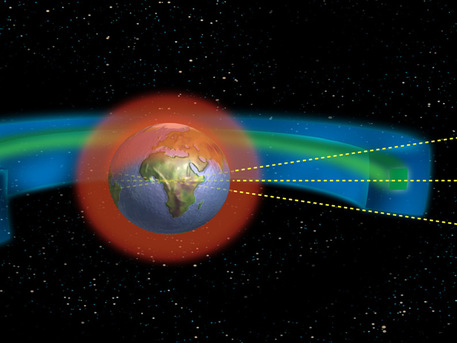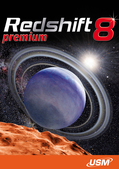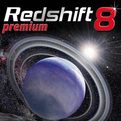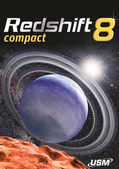5th European Conference on Space Debris
Concepts against space junk
 © CNES |
Protected orbital regions as developed by the IADC LEO (Low Earth Orbit): from Earth surface up to 1250 miles GEO (Geostationary Orbit): from 21,615 to 22,857 miles from the Earth's surface (equatorial latitude ± 15°)
- » 1 - The Mission: Protect Space
- » 2 - The Key Findings in Detail
The Mission: Protect Space
The 5th European Conference on Space Debris demonstrated a well-established, consolidated knowledge base on the understanding and protection of the current space debris environment. This consolidated knowledge has led to internationally accepted concepts of space debris mitigation.
However, it is common understanding that mitigation alone cannot maintain a safe and stable debris environment in the long-term future. Active space debris remediation measures will need to be devised and implemented. This is the main message from this conference.
While such measures are technologically demanding and potentially costly, there is no alternative to protect space as a valuable resource for the operation of indispensable satellite infrastructures. Their direct costs and the costs of losing them will by far exceed the cost of remedial activities.
5th European Conference on Space Debris
Concepts against space junk
 © CNES |
Protected orbital regions as developed by the IADC LEO (Low Earth Orbit): from Earth surface up to 1250 miles GEO (Geostationary Orbit): from 21,615 to 22,857 miles from the Earth's surface (equatorial latitude ± 15°)
- » 1 - The Mission: Protect Space
- » 2 - The Key Findings in Detail
The Mission: Protect Space
The 5th European Conference on Space Debris demonstrated a well-established, consolidated knowledge base on the understanding and protection of the current space debris environment. This consolidated knowledge has led to internationally accepted concepts of space debris mitigation.
However, it is common understanding that mitigation alone cannot maintain a safe and stable debris environment in the long-term future. Active space debris remediation measures will need to be devised and implemented. This is the main message from this conference.
While such measures are technologically demanding and potentially costly, there is no alternative to protect space as a valuable resource for the operation of indispensable satellite infrastructures. Their direct costs and the costs of losing them will by far exceed the cost of remedial activities.









